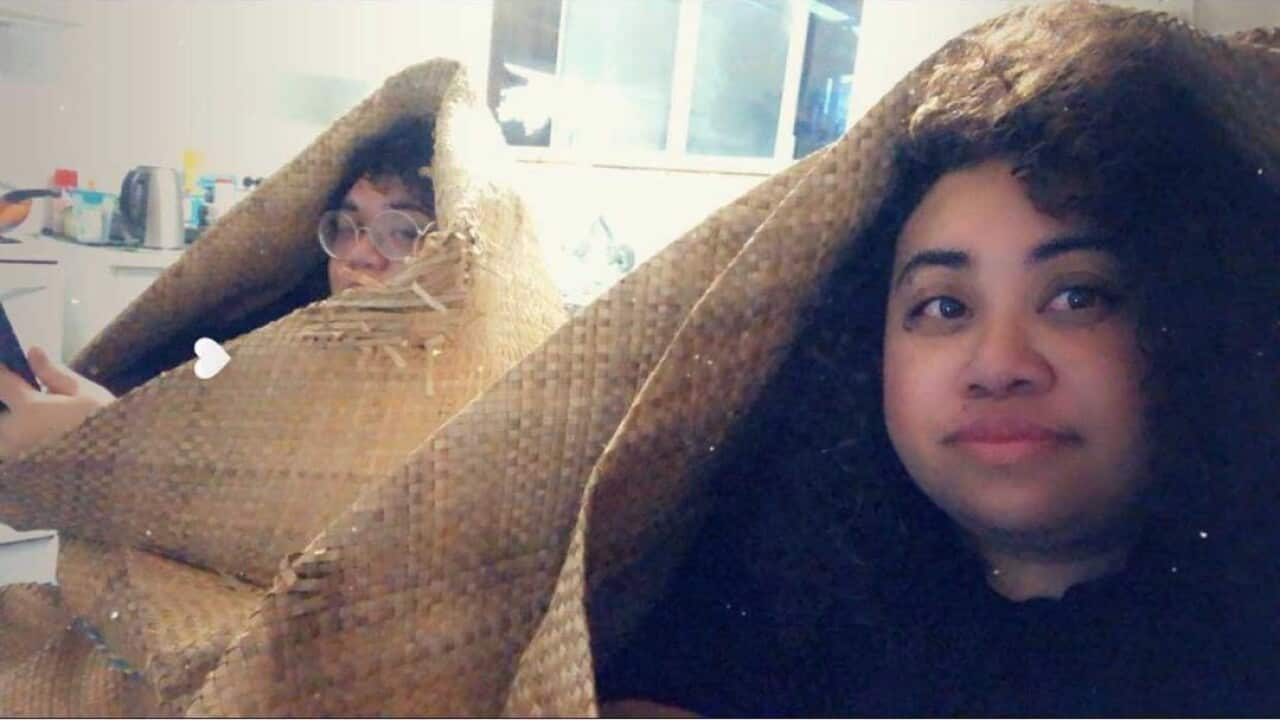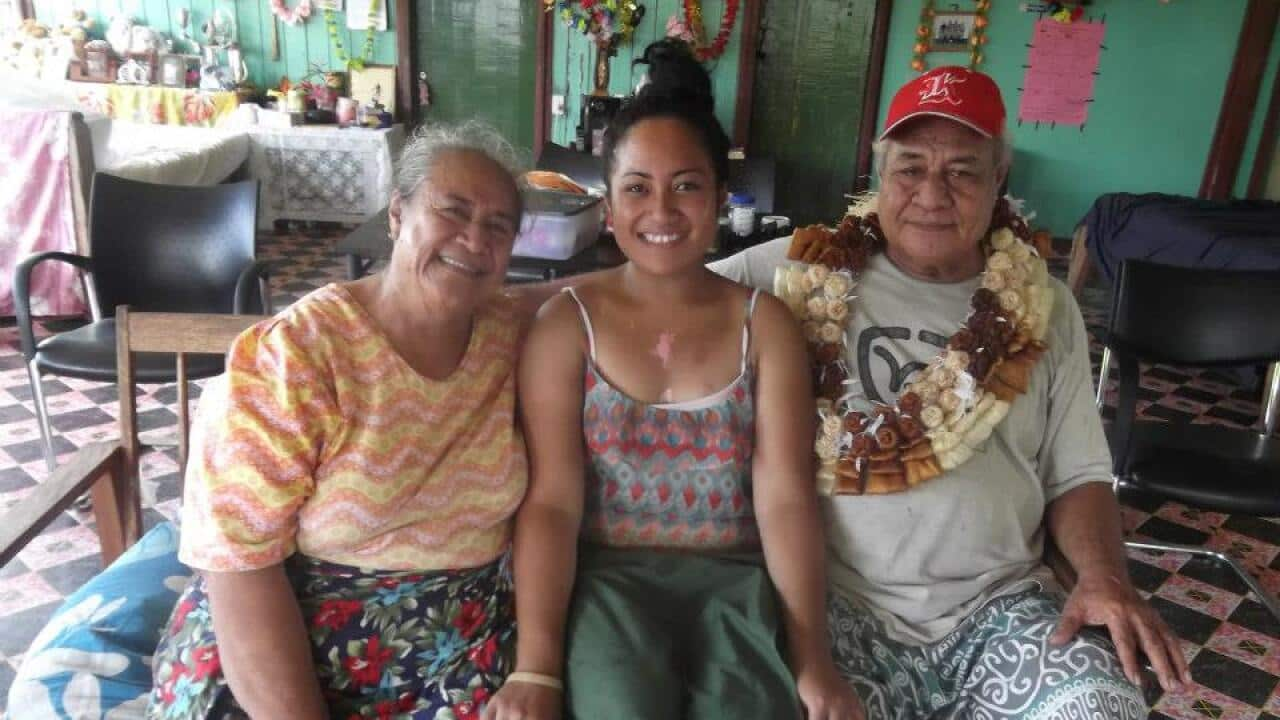My family and I immigrated to Australia from Auckland New Zealand when I was three years old and settled in a humble two bedroom home nestled in the vibrant Western Sydney suburb of Blacktown. I can recall walking down Main Street towards Salvos and begging Mum to stop as we approached the Vietnamese bakery that birthed my love for pork rolls. The aroma of Indian spices that stretched out onto the street from a family-owned supermarket and greeted the smoke of charcoal chicken from the kebab shop next door. I never felt different, because Blacktown was weaved with stories of hundreds of migrant families, like mine, and the sound of many native tongues that echoed in Westpoint mingled together in harmony.
Then things shifted when we left Blacktown, when I was nine, and moved into Clunes NSW, where questions and comments highlighting my differences in appearance became a frequent occurrence. “Where are you from?” was often the first question I was asked. When I’d respond, “I’m from Blacktown”, I was met with puzzled looks that were followed by snarky remarks like, “Oh, is that because you’re Black?” I’d roll my eyes and think to myself, I’m Brown. “You know Michael Jackson used to be Black too,” Tami explained in a failed and warped attempt to comfort me. She was my first friend at my new school. I envied her short blonde hair, light brown eyes and olive skin. “But, he’s white now so anyone can be white too.”
Where are you from?” was often the first question I was asked. When I’d respond, “I’m from Blacktown”, I was met with puzzled looks that were followed by snarky remarks like, “Oh, is that because you’re Black?
By the time I reached high school, we had been living in Yass, NSW for six months. The snarky remarks turned into overt racist blows that fractured my relationship with my Tongan identity. I was called a Black c*** by a boy named Luke during a competitive game of handball in the school courtyard. Three years later after that incident, I was told to go back to where I came from in the middle of a science class by another student named Todd. No one said anything and I realised I was alone. I ran out of the lab and spent the remainder of the class in the girl’s toilet block.
That was 2007. In that same year, Chris Lilley was dressed in brownface in his television series and introduced Australia and the world to Jonah Takalua – a vulgar, illiterate Tongan teen who bullied ‘rangas’ and liked to breakdance. In 2020, former Canterbury Boys High School student Filipe Mahe claimed that Chris Lilley based Jonah Takalua on him. Mahe was the subject of an ABC documentary entitled which followed disadvantaged students at his school in 2004. After the showed aired, Chris Lilley visited Canterbury Boys High and observed classes. Mahe spoke to the and expressed how he felt “embarrassed” and “exploited” by Chris Lilley’s character. When the article was published, hundreds of people flooded the SMH Facebook comment section in support of Chris Lilley’s infamous character. Brownface is more than just a bit of make-up and humour. It invokes a of white people mocking enslaved Africans in the US and the perpetuation of of Indigenous Australians and people of colour.
To some extent, my torment throughout school was a product of Australia itself. I didn’t see a positive and genuine representation of people of colour in the television shows that I watched or the books that I read. It was dominated by White reporters, writers, actors, producers and executives who had full control in the way in which narratives of minorities were portrayed. I tried many times to white out my Tongan identity like shortening my long Tongan name on school exam papers. This involved removing my middle name, because despite the family history and significance Faka’iloatonga carried, to my friends my name sounded like a “rude swear word.” As I entered my early 20’s my introductions would begin with “My name is Sela,” and end with, “but you can call me Sarah.”
I took a seat next to Farah, scanned the faces that surrounded me and realised 90 per cent of my colleagues were strong women of colour from Western Sydney who were content and confident in their individual cultural identities.
It wasn’t until I moved back to the Blacktown area that I was able to completely shed years of minority angst and heal from the racism I experienced as a young child and teen. By that stage, I had been working at an early childhood centre in Sydney’s Inner West where my Manager Dian was a Lebanese woman from Merrylands. Her walk radiated confidence and every word she spoke was cogent. I remember sauntering into the Preschool classroom for my first staff meeting with my colleagues. The sight that greeted me emulated a scene I would typically encounter walking into a backyard BBQ at my Uncle Sam’s Bankstown home. Dian had ordered three trays of Pizza and three boxes of El Jannah and spread it evenly across five children sized tables. There were 17 educators gathered around the food engaged in laughter filled exchanges. “Yallah ladies we were supposed to start 10 minutes ago,” She uttered. “It’s not a meeting without a feed,” joked Farah. The Hijab that gently framed her face emphasised her chestnut coloured eyes and warm smile. “I thought you had the day off?” I asked. “Yeah I drove in from Parra ‘cause I missed Dian,” she teased. Our laughter roared amongst the rest of the noise that filled the classroom. I took a seat next to Farah, scanned the faces that surrounded me and realised 90 per cent of my colleagues were strong women of colour from Western Sydney who were content and confident in their individual cultural identities. Growing up, this sense of belonging was absent from my life, outside the love and comfort of my immediate and extended family and something I yearned for in the schoolyard. My husband and I have strolled down Main Street with my children, duplicating the path I once meandered as a seven-year-old, but the Vietnamese bakery we used to visit is no longer there. Instead, I get my pork roll fix from Angels’ Bakery in Prospect. Every now and then we drive down Main Street, and Flushcombe Road amongst an abundance of family owned restaurants in search of a palatable feed. On the weekends we shop for fresh produce at Parklea Markets or Westpoint Woolies and there I find a familiar solace in the sound of thick ethnic accents, broken English, and the fact that over a hundred different ethnicities, religions and languages called Blacktown home too. Moving back to Western Sydney helped me reclaim my identity as a proud Tongan Australian living on Aboriginal land.
My husband and I have strolled down Main Street with my children, duplicating the path I once meandered as a seven-year-old, but the Vietnamese bakery we used to visit is no longer there. Instead, I get my pork roll fix from Angels’ Bakery in Prospect. Every now and then we drive down Main Street, and Flushcombe Road amongst an abundance of family owned restaurants in search of a palatable feed. On the weekends we shop for fresh produce at Parklea Markets or Westpoint Woolies and there I find a familiar solace in the sound of thick ethnic accents, broken English, and the fact that over a hundred different ethnicities, religions and languages called Blacktown home too. Moving back to Western Sydney helped me reclaim my identity as a proud Tongan Australian living on Aboriginal land.

Source: Supplied
*Names have been changed for privacy
Sela Atiola is an educator of Tongan heritage residing on Darug land in Western Sydney. She holds a Diploma of Early Childhood Education from TAFE NSW and is completing her Bachelor of Social Science at Swinburne University of Technology. Sela self-published a children's picture book entitled 'I Am Lupe' in July 2021.
This article is part of SBS Voices' Straight Up Islander series, showcasing the work of writers with ancestral ties across Oceania. It has been edited by Winnie Dunn, in partnership with Sweatshop Literacy Movement Inc.

A commissioned illustration for the SBS Voices 'Straight Up Islander' collection by artist Tori-Jay Mordey. Source: Tori-Jay Mordey






